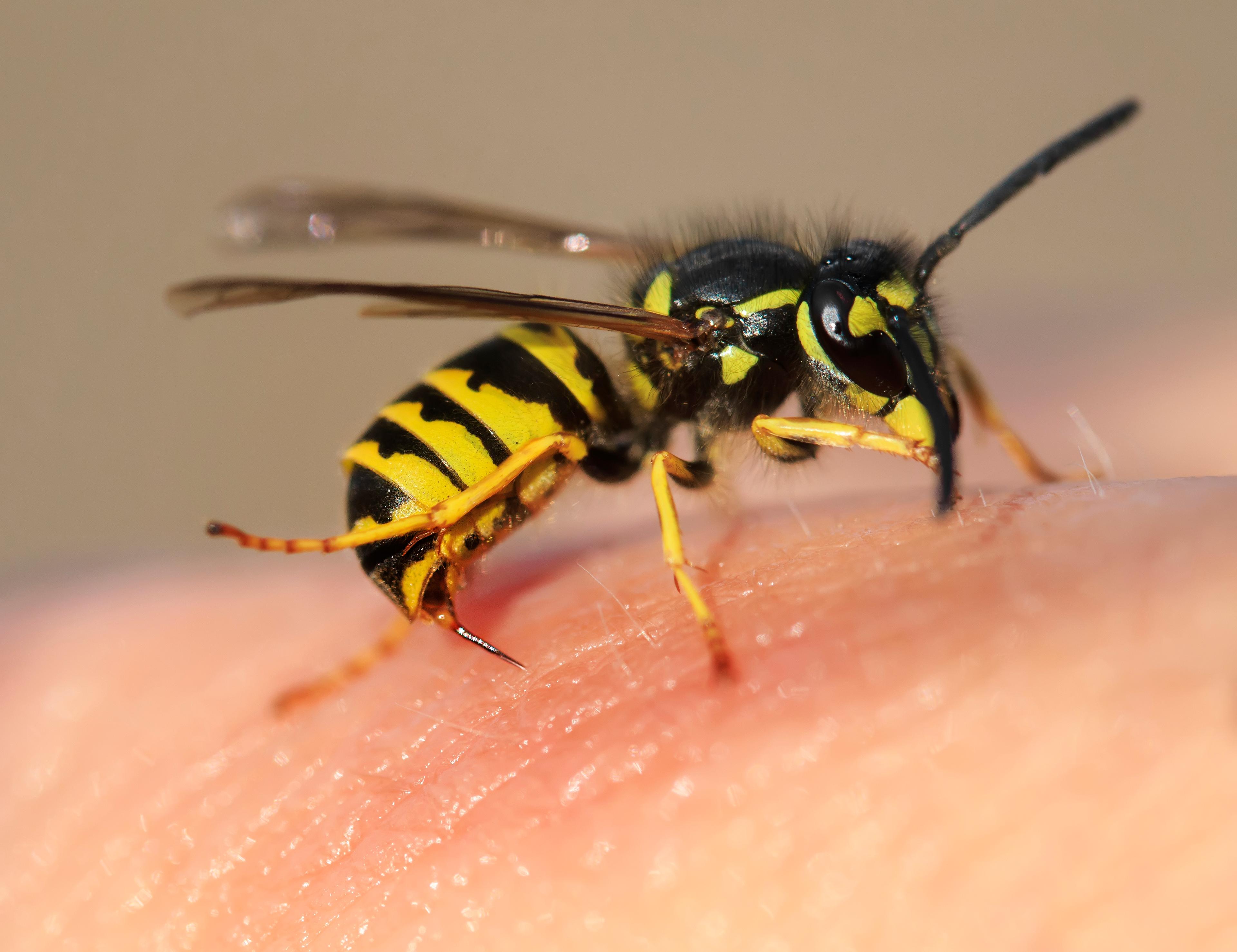How to Treat Bee and Wasp Stings

Caroline Samuelsen
| 4 min read

Summer is in full swing, which means people are spending more time outside. It also means that more insects are outside, including bees and wasps. Being stung by a bee or wasp is scary for many people, but it can cause more than pain in some situations. According to the Mayo Clinic, about 5% of people are allergic to insect stings.
Call 911 for these symptoms of anaphylactic shock from insect stings
For some, a bee sting can be an annoying, painful occurrence that fades after a day or two. For others, a bee sting can be dangerous. For those who are allergic to the venom the insects produce, it’s important to know the symptoms of an allergic reaction.
Symptoms of anaphylactic shock, according to the Mayo Clinic, include:
- Difficulty breathing
- Dizziness and nausea
- Itching and hives throughout the body
- Swelling or itching of the throat and tongue
- Stomach cramps and diarrhea
- Rapid fall in blood pressure
- Heart issues
- Loss of consciousness
- Pale or clammy skin
Call 911 immediately if someone shows these symptoms. While waiting for instructions from the operator, check to see if the person has been prescribed an epi pen. Perform CPR should someone become unconscious.
How to use epinephrine
If prescribed, epinephrine, or an epi pen, is the first treatment for someone experiencing anaphylactic shock. If someone does not have a prescription for an epi pen please call emergency services as soon as symptoms develop because they can progress quickly. If available, ask the person if they need help administering the medication and follow the steps below:
- Read and follow instructions on the epi pen very carefully.
- Inject epinephrine into the outer muscle of the thigh.
- Avoid injecting into a vein or a buttock muscle.
- Do not inject the medicine into their hands or feet, it could cause tissue damage.
- If this happens, notify emergency room staff.
- The person could need more than one injection if there’s no improvement 5 to 15 minutes after the first.
- Do not administer more than two doses unless it is done under direct medical supervision.
- A person should always go to the ER after epinephrine administration even if the symptoms go away after being treated because they can reoccur sometimes hours later.
- Over the counter antihistamines alone do not treat anaphylaxis.
What to do for a non-emergency bee or wasp sting
If you are not experiencing symptoms of anaphylactic shock, then you are in a non-emergency situation. Here are the steps you can go through to ensure that you are treating the sting:
1. Remove the stinger and insect
When removing the stinger, use a straight edge such as a credit card or ruler to Scrape the area. Do not use tweezers or your fingers to pinch the stinger or you could inject more of the venom.
2. Treat swelling and irritation
Wash the area well with soap and water. The best way to combat swelling is to ice the area. Ice helps to reduce irritation and cool it down. If the sting is on your arm, elevate it. Remove any tight-fitting jewelry or garments near the sting because swelling can make them difficult to remove.
3. Treat pain and itching
If there is pain, take an over-the-counter painkiller like ibuprofen or acetaminophen. If the area begins to itch, take an antihistamine. You could also create an at-home remedy of baking soda and water or calamine lotion. Itching and pain are common with bee and wasp stings.
4. Follow up with your primary care team as needed
Monitor your symptoms for two to five days as the swelling, pain, and itching could last through that time. If the symptoms continue past that time frame, or if the redness and swelling continue to spread outside the sting, it may be a good time to check in with your primary care provider to see if anything further is needed. In some cases, it may take up to 10 days for the skin to return to normal.
Image: Getty Images





